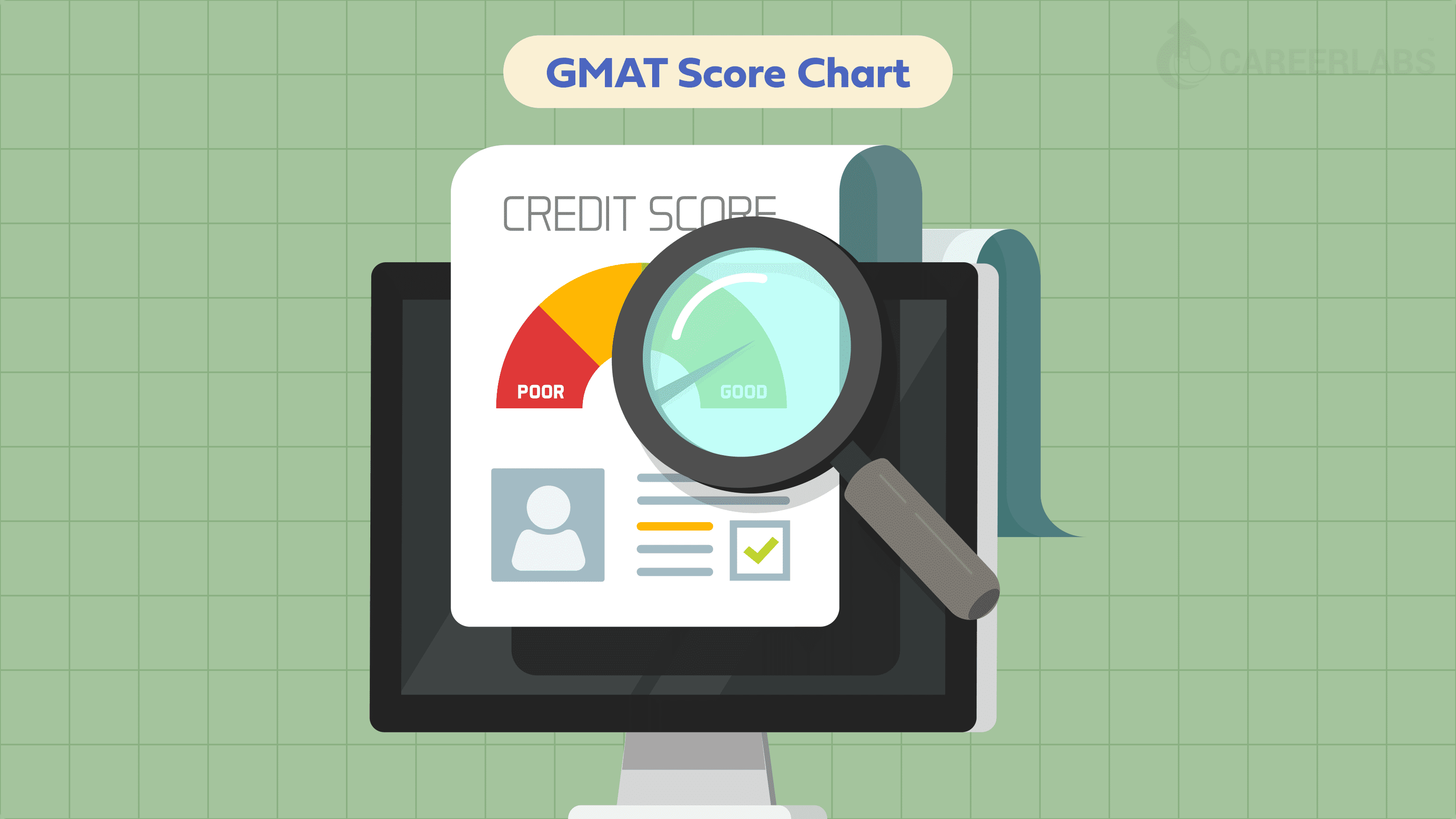The score of the Graduate Management Admission Test (GMAT) is an important component of your graduate B-school admission. The exam has four sections — Quantitative Reasoning, Verbal Reasoning, Analytical Writing Assessment, and Integrated Reasoning. The Quant and Verbal sections both range from 0 to a maximum score of 60 with 1-point increments. The Analytical Writing Assessment score ranges from 0.0 to 6.0 with 0.5-point increments and the Integrated Reasoning score from 1 to 8 with 1-point increments.
Read on for some important details about the GMAT score, and the GMAT score chart that you can use to calculate your own score.
Some Points To Note About How the GMAT Exam is Scored:
- The GMAT maximum score you can acquire depends on the number of questions you answer, whether your answers are correct, and the difficulty level of the questions you answered. It is important to note that in the Verbal and Quantitative sections, based on the answers you get correct or incorrect, the GMAT algorithm adjusts the difficulty level of the questions you will get next in real time.
- Your score will decrease with each question you leave unanswered, and if you leave a section incomplete, your score takes a significant hit.
- 800 is the highest GMAT score possible.
- The average GMAT exam candidate scores between 400 and 600.
- In addition to the number scores, you will also be given a percentile ranking that informs you of how you did in the exam relative to other test-takers in the past three years.
- The top business schools prefer candidates in the ninety-fifth percentile and above, which usually means a score of above 720.
- Only the Quant and Verbal section scores count towards your total GMAT score. However, this does not mean the AWA and IR sections are not important – business schools still use these scores to judge your ability to communicate and solve complex problems. Having a low score may hamper your chances of getting into your school of choice.
GMAT Score Chart
As mentioned above, your GMAT score is calculated on the basis of your Verbal and Quant scores. While the AWA and IR scores are also mentioned on the score report, the main score is the result of an algorithm that uses your Quant and Verbal scores to come up with a final score.
The actual algorithm used — by GMAC — or any specifics about it have not been revealed, and how the “raw” score is translated into the “scaled” final score is still unclear. However, everybody wants to get a score that matches or exceeds the cutoff of the desired program or B-school. You can use the GMAT score grid provided below to understand what combination of Verbal and Quant scores is likely to lead to the score you need to obtain for your B-school application.
Here is the GMAT chart to help you calculate your targeted GMAT scores by combining your probable GMAT quant and verbal raw scores.
We hope the information in this article and the GMAT score chart will be useful to you on your GMAT journey. Remember that the GMAT score is valid for five years after you take the exam. Moreover, in addition to your scaled score, you will also receive a percentile rank that shows you how you performed with respect to the previous three years of test-takers.
Good luck with your GMAT exam!











Talk to an expert?